Schmersal Mounting materials
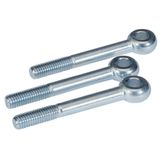


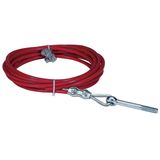
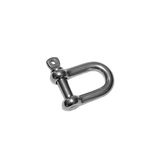

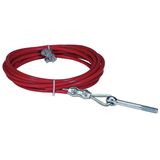

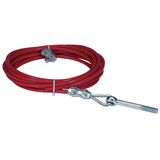
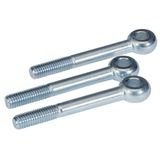
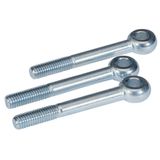
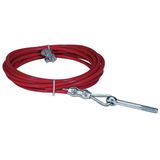
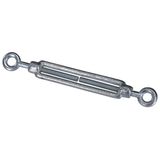
schmersal mounting materials for cabinets and machines
Built for panel shops and machine builders, this portfolio covers rails, adapter plates, sensor brackets, profile hardware, and door-coupling accessories that keep assemblies dimensionally stable and serviceable. Parts are supplied in zinc-nickel plated steel for corrosion resistance, anodized aluminum where weight matters, and A2/A4 stainless for wash-down. Hole patterns follow common 25 mm grids and M5/M6 threads; elongated slots absorb installation tolerances and door float. Edges are deburred to protect cable jackets and gloves in tight cabinets.
Product range and series overview
The range groups into practical families so OEMs can standardize across machine models:
- DIN rail and plates: EN 50022 35 mm rail (perforated and solid), backing plates, and door plates sized for common enclosure frames.
- Sensor/actuator brackets: L-, T-, and adjustable slotted plates for reed, inductive, and coded guard actuators; hinge adapters for interlocks on rotating guards.
- Profile hardware: T-nuts, spring-ball profile nuts (M4–M8), corner brackets, and standoffs for 30×30 and 40×40 aluminum profiles.
- Door-coupling parts: shafts, couplers, and handle carriers with centering bushings to align isolators and e-stops through the door skin.
- Fastening and strain relief: saddle bars, tie bases, and clamp assemblies that relieve flex and protect terminal rows from door movement.
schmersal brackets and supports for sensors and guards
Guard sensing needs precise geometry. These parts provide slotted faces for ±3…5 mm positional trim and offset shims for parallelism on misaligned frames. Stainless variants use rounded radii and polished faces (typ. Ra ≤ 0.8 μm) to shed product residue in food zones. Hinge and striker adapters match common hole centers on modular fencing, so retrofit jobs drop in without drilling. Color-coded spacers help maintain ISO 14119 actuator gaps after service.
Technical specifications and standards
Mechanical design references IEC 60204-1 for equipment mounting and protective bonding points, ISO 14119 for interlock and actuator positioning, and IEC 60068-2-6/-2-27 for vibration/shock fitness where specified. Plated steel hardware passes neutral salt spray classed for factory environments; stainless parts are AISI 304/316 with captive fasteners where lids are removed frequently. Temperature resilience typically −25…+70 °C. Thread engagement and torque charts accompany each kit (e.g., M6 8.8 bolts at 9–10 N·m into steel, reduced for aluminum with thread-formers). Paint-safe stand-offs preserve conductive paths for PE jumpers when bonding is required.
Applications and compatibility
Typical placements: interlock actuators on sliding doors, coded sensors on polycarbonate guards, proxes on indexing jigs, and strain bars behind gland plates. Brackets align with enclosure door ribs and aluminum profiles, so layout teams can keep a single drawing set across frame sizes. Wash-down cells specify stainless supports and sealed bushings; high-vibration tools add serrated washers and double-nutting on M6 studs to hold calibration between PM intervals.
System architecture and panel coordination
A tidy cabinet reserves fixed reference planes: rails, mounting plates, and relief bars create clear cable routes and safe working clearances. Use slotted plates to set the nominal actuator gap, then lock with dowel-pin holes for repeatable service. On doors, pair the handle carrier with a shaft support near the hinge to remove bending from the switch body. Tie bases sit in the “cold” duct; strain bars take the door swing load so terminals see near-zero movement over millions of cycles.
Integration with other brand products
Hardware is dimensioned for the brand’s safety sensors, interlocks, light curtains, and switch disconnectors, so the same hole centers and shaft geometries repeat across projects. That consistency means shorter commissioning: the coded sensor aligns on the slotted plate, the isolator handle couples through the door at a fixed center height, and the strain bar matches the terminal pitch. Documentation packs map bracket IDs to drawing callouts for clean EPLAN bills.
Selection criteria for B2B engineers
Start with the environment (paint line, wash-down, press line) and pick material/coating accordingly. Define the sensor or interlock family and check the specified switching distance and permissible misalignment—choose a bracket with enough slot travel to hit those numbers. Confirm thread class and torque; where aluminum profiles are used, prefer steel inserts or through-bolts to avoid creep. Leave at least 10–15 mm clearance for tools around terminal relief bars, and standardize on one standoff height to keep door and baseplate planes parallel across sizes.
Procurement and kitting for OEM programs
Panel shops cut downtime by stocking pre-bagged sets: bracket, fasteners, washers, shims, and a printed torque card. Multi-machine rollouts benefit from uniform profile nuts (M5 across all stations) and one standoff family to reduce SKU count. For field crews, include spare shims and a color card that corresponds to actuator gap targets—service teams can restore geometry without re-measuring. This is where schmersal installation hardware simplifies life: identical head styles and washer stacks mean fewer tools on the cart, fewer surprises at FAT.
Advantages of working with Bankoflamps
Bankoflamps aligns pricing with your BOM and shows live inventory across EU warehouses before you schedule builds. Quotes typically land in about an hour, orders by EAN/MPN prevent variant drift, and your portal exposes lead times, shipment status, and downloadable price lists for budgeting. Approved partners can use post-payment terms up to 30 days. We consolidate partials to lower freight and guarantee price-validity windows so phased rollouts stay predictable. Kitting services assemble brackets, standoffs, and fasteners to your drawing, so your teams receive ready-to-fit schmersal fixing kits for each station.